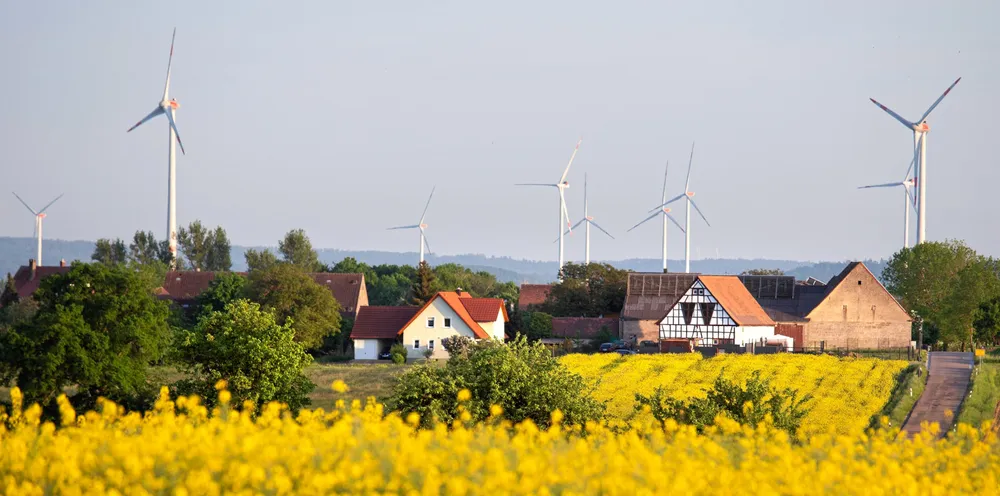Wind farms' impact on house prices: largest ever study gives its verdict
Massive investigation into effect on real estate prices looked at 500,000 sales across 34 US states and over 400 wind arrays

The impact of wind farms on nearby property values is temporary, with real estate prices bouncing back within a few years after project commissioning, a major new study by the US Lawrence Berkeley National Laboratory finds.
Viewscape impacts weigh heavily on both onshore and offshore wind development and played a key role in the collapse of the US’ first commercial-scale at-sea wind project, Cape Wind.
The study found on average, “homes located within 1 mile (1.6km) of a commercial wind turbine experience approximately an 11% decline in value following the announcement of a new commercial wind energy project, relative to counterfactual homes located 3 to 5 miles away.”
This initial slump is followed by a post-project construction recovery, “with property value impacts becoming relatively small (~2%) and statistically insignificant 9 years or more after project announcement (roughly 5 years after operation began),” the study noted.
“Homes located within 1–2 miles of a commercial wind turbine experience much smaller impacts and homes located farther than 2 miles away are unaffected,” the study added.
The study, done with support of the Department of Energy’s Wind Energy Technologies Office, is said to be the broadest view yet of wind energy’s impacts on residential property values.
It reviewed 500,000 real estate transactions adjacent to 428 unique wind projects across 34 states from 2005-2020.
The dataset spans the period 4 years before significant activity began in the project area, referred to as “announcement”, to more than 6 years after the project began operating, allowing “an unprecedented examination of impacts on sales prices through the full wind project development cycle”.
Nearby home values begin to decline on average three years before construction with the onset of development activities and continue to drop during project installation.
Prices return to “inflation-adjusted pre-announcement levels three to five years after project operation commences”, the study observed.
Adverse effects were not evident within a half-mile of the nearest turbine, mostly attributed to the lack of sales so close to the development.
“If property value impacts exist within that distance, they were too small and/or too infrequent to result in any widespread, statistically observable impact within the study model,” the report said.
The study likewise observed that impacts were stronger in more densely populated US counties with populations greater than 250,000.
“Impacts are not apparent in home prices near projects in more rural counties,” it said.
While the study offers significant data to inform public debate, its authors added important caveats, noting that it doesn’t compare real estate prices in wind energy areas to those outside such zones.
“Nor did it examine the impact of other economic effects such as increased local tax revenue and worker income that might increase home prices across communities with wind development,” the study authors added.
“We hope to examine those in future iterations of this work,” they said.
(Copyright)